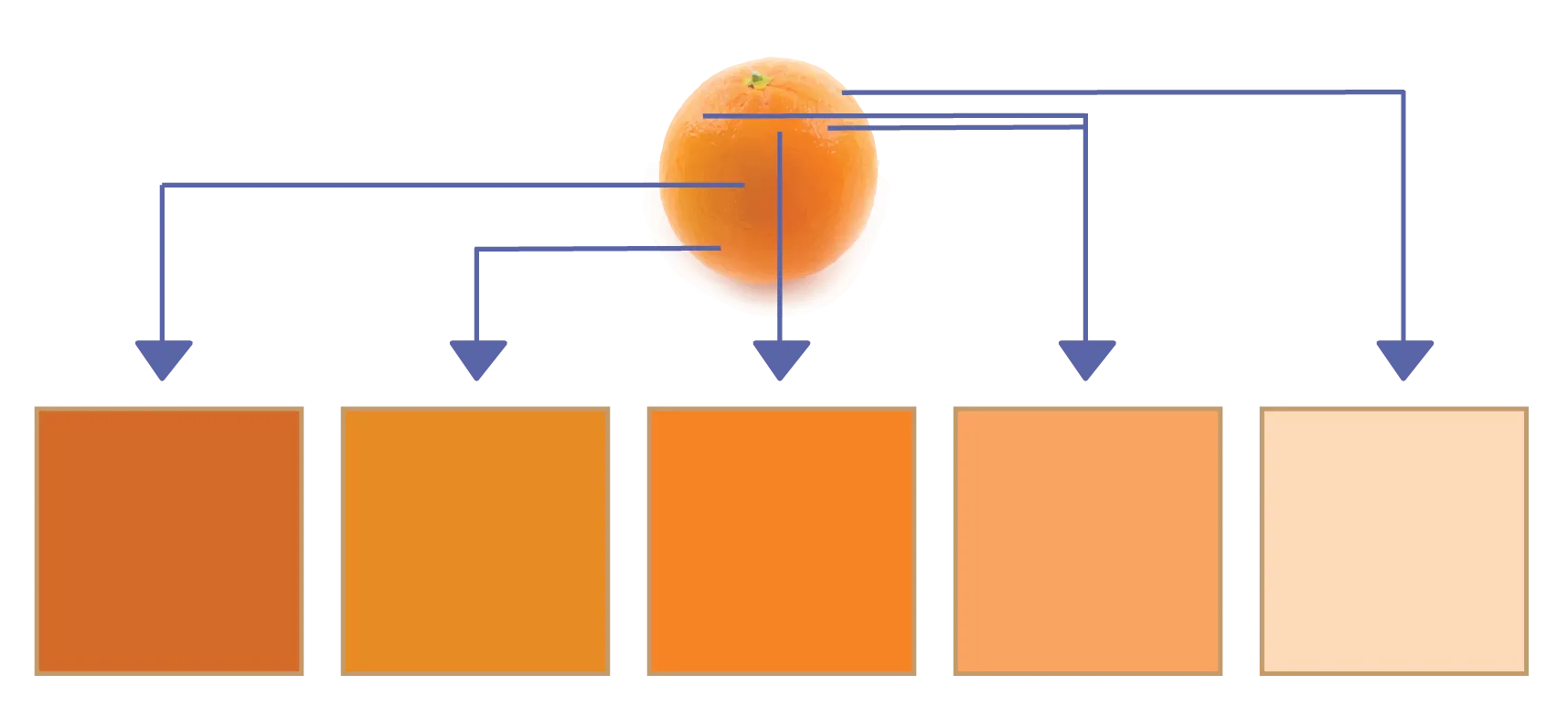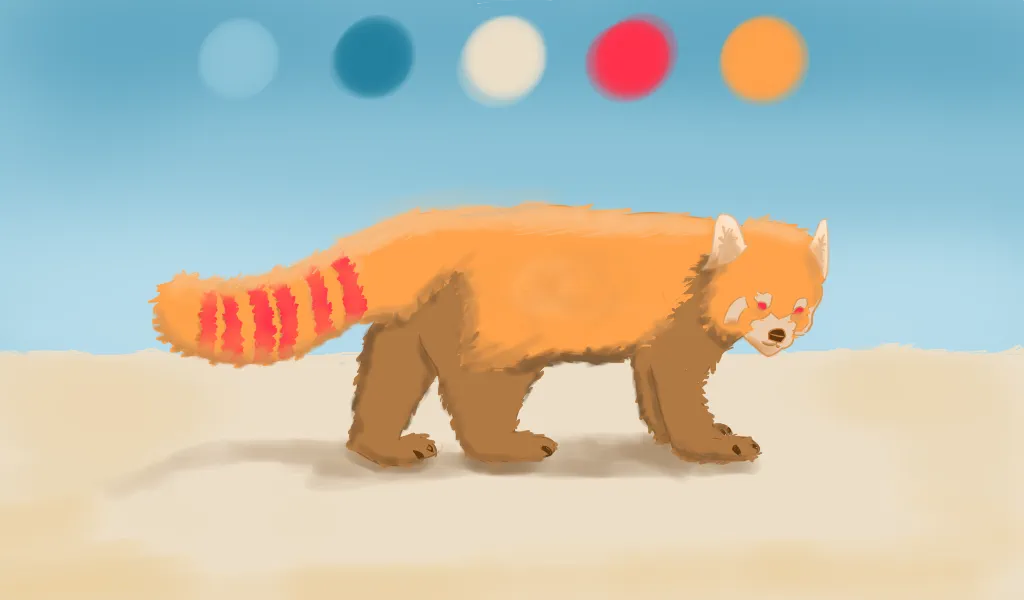Coloring
Most drawings these days are in colour. This doesn’t really change much of your workflow or the principles behind the drawing, but it does require learning some colour theory, and how it interacts with shading your drawing.
I strongly suggest reading the Colour Theory course. If you already have some knowledge of colour, read on! I won’t use a lot of that colour theory here, but I do use basic concepts with which it helps to be familiar.
Colour Shading
Usually a colour palette is established before any colouring starts. A set of 5 colours is usually recommended.
In the center of the palette is the base colour. This is the average or expected colour of the object. For example, an orange has base colour orange, while a flower has base colour green. Yes, there are other colours there, but the base colour is the most common one.

To the left of this base colour are two shading tones. The lighter one is for soft edges or reflected shadows, while the darkest colour is used for full and cast shadow. Shading tones are acquired by lowering the brightness and saturation of the base colour.
To the right of this base colour are two highlighting tones. The lightest should be reserved for the actual spot where light hits an object, while the other should be used around it to smoothen the transition to base colour. Highlighting tones are acquired by raising the brightness and lowering the saturation.
Sometimes the hue of shadow tones is shifted to cooler colours (such as blue or purple), and the hue of highlighting tones to warmer colours (such as red or orange).
Shading colors
As you see, shadows are rarely solid black or grey. The colour of the shadow depends on only one thing: the original colour at the point it hits. This original colour will darken.
Remember, lights can only add light. If a yellow light creates shadows, that doesn’t suddenly make all the shadows yellow. Why would it? Shadow is the point where light doesn’t reach, so it’s the one thing the light will certainly not color.
A cast shadow from a green object onto a brown floor, is a dark brown colour. Not dark green. The shadow is a result of light not reaching some spots of the floor, not the object’s colour somehow interacting with it.
Shadows are a darker version of the original color at that point. However, this original color can obviously change. L
Let’s say a different red light weakly shines on that brown floor from the other side. This means the floor will turn red-ish. Now, when a shadow happens, it will be a dark brown-red-ish colour instead.
On the other hand, highlights are a result of light. So if a yellow light hits the top of a green object, it will mix the green and yellow.
How to mix colors
How do we mix colors A and B
Many people will go to their color wheel and simply rotate it to a color between A and B. This is not correct.
And it’s easy to see why. Let’s say you have a bright blue object which receives a bright orange light. With this technique, it would suddenly look bright green. Where did that come from? Is that natural? I don’t think so.
Instead, view every shade using that color palette I described above. It can be more saturated ( = more pure color) or desatured ( = more towards grey).
When mixing, travel from colour A to colour B through this desaturation. As you mix in colour B more and more, colour A desaturated and only moves slightly to colour B. Once you pass the 50% mark, B is more powerful then A, so you saturate again and are already almost completely colour B.
This way, two bright colours interacting, will result in a more saturated midtone. This looks natural and is easier to work with.
Overall Use of Colour
Everything needs to be shaded. That means establishing such a colour palette for each object would seem ideal. Using many different colour schemes, however, turns your drawing into a mess.
Instead, establish a 5-colour palette for your entire drawing. These can be completely unrelated colours, as long as they look good together. Use those lighter and darker variations on each color for the highlights and shadows.
If you’re drawing digitally, the computer can obviously immediately give you any color you want. I see no reason to not use these great tools and color pickers.
Only if you’re looking for a more painterly / traditional style, do I recommend mixing colours on the computer as if they were real paint.
If you want a darker version, add black to the colour. If you want a lighter version, add white to the colour. If multiple objects in your scene are interacting, mix their colours to get the right highlights and reflected lights.

Exercises
Give yourself a start and end colour. Now mix them to achieve a nice transition between them. Note that this can be done with any tools you like, such as colouring pencils, paint, or simulated using software on the computer.
Want to support me?
Buy one of my projects. You get something nice, I get something nice.
Donate through a popular platform using the link below.
Simply giving feedback or spreading the word is also worth a lot.